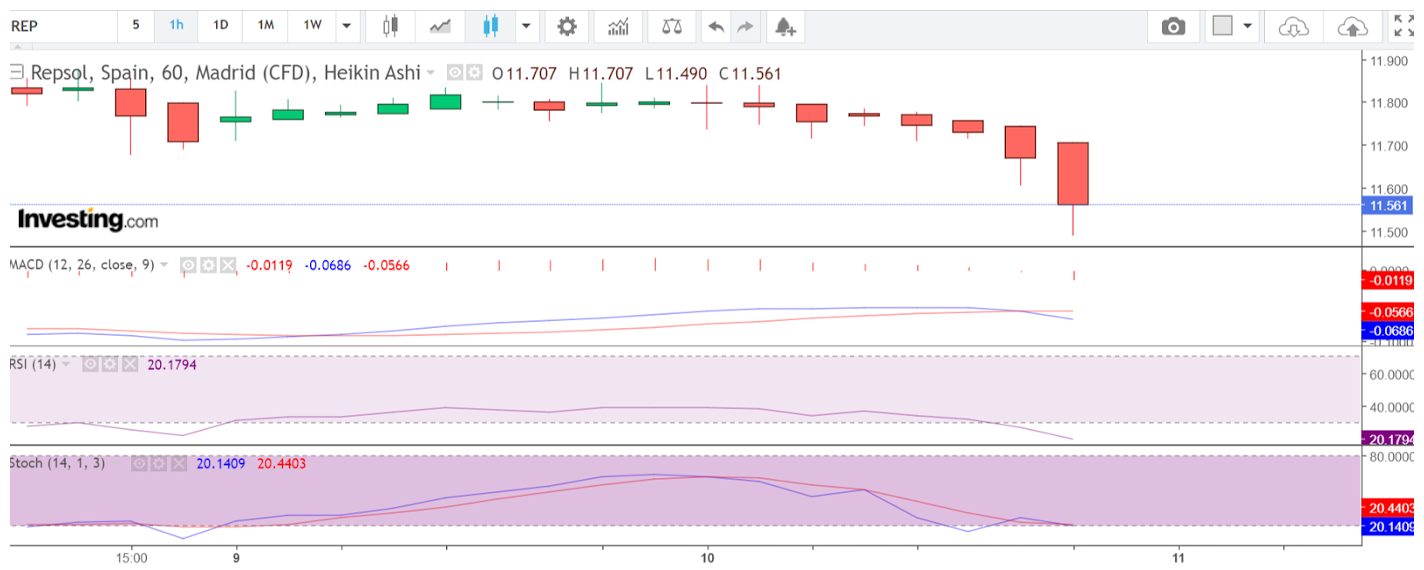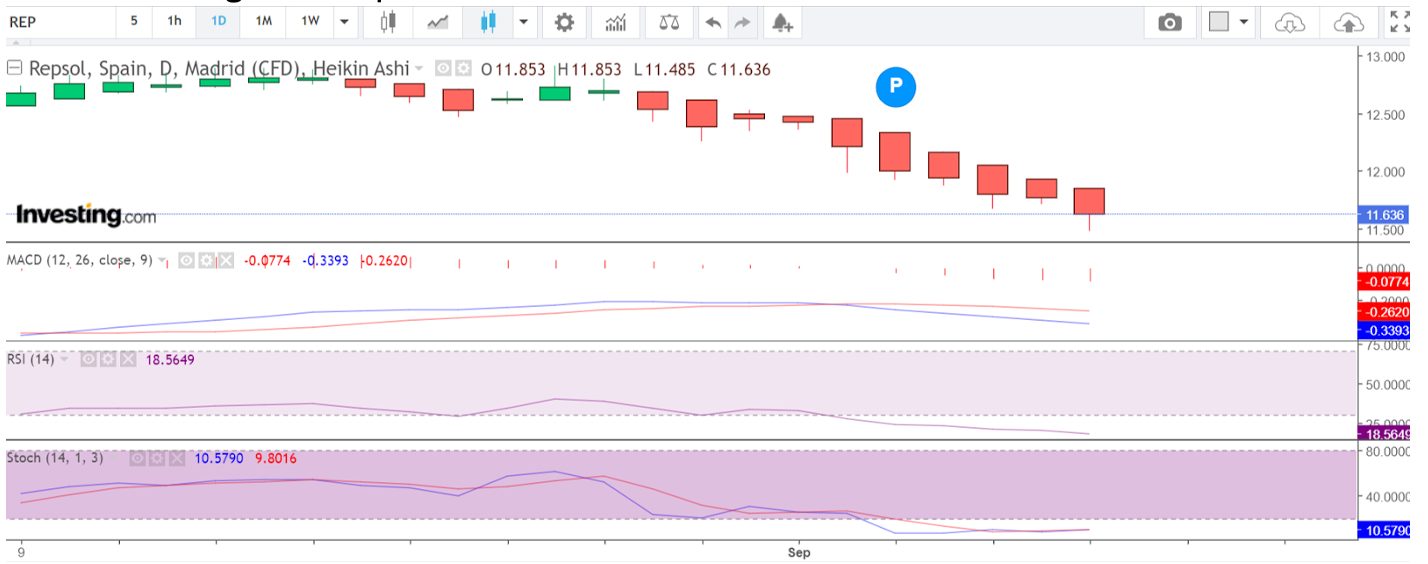CFD Trading in Spain



Contract for difference (CFD) trading in Spain has taken off, letting traders speculate on upward/downward price movements across a range of Spanish, European and global financial markets.
However, the Spanish CNMV has tightened its rules on CFDs. In 2017 it required extra risk warnings for high-leverage CFDs, and in 2019, it introduced restrictions in line with ESMA’s 2018 measures.
Want to start CFD trading in Spain? This guide for beginners will equip you with the essentials.
Quick Introduction
- CFDs are derivatives where you enter a contract with a broker to exchange the difference in the price of an asset, such as a Spanish stock, between the opening and closing of the trade.
- They allow you to profit from rising and falling markets by going long (buying) or short (selling). You don’t own the underlying asset; you speculate on its price movement.
- CFDs are traded on margin; you deposit a fraction of the trade’s total value and leverage your trading results (profit and loss), necessitating strict risk management.
- The high-risk product is regulated by the Comisión Nacional del Mercado de Valores (CNMV), while CFDs are not subject to stamp duty in Spain since the asset is not owned.
Best CFD Brokers in Spain
Following our experts’ latest tests, these 4 platforms rank as the top picks for CFD traders in Spain:
How CFD Trading Works
CFD trading in Spain provides a fast-paced way to speculate on price movements in a wide range of financial markets, including Spanish stocks, currency pairs containing the Euro, or even cryptocurrencies, all without owning the asset. You just bet on whether an asset’s value will rise or fall.
One of the key attractions for CFD traders is leverage, allowing you to control larger positions with less capital, referred to as margin. Leverage amplifies both potential profits and losses, so it’s important to use it carefully.
For example, imagine you’re trading the IBEX 35, Spain’s primary stock index, and you anticipate a rise. If one CFD contract on the IBEX 35 is valued at €11,800 and your broker requires a margin of 5%, your required deposit per contract would be €590.
If you decide to trade 10 contracts, your total margin requirement would be €5,900 (€11,800 x 10 contracts x 5%).
Now, if the IBEX 35 increases to €12,100, your profit would be €300 per contract. For 10 contracts, this would give you a total profit of €3,000 (€300 x 10 contracts), minus any broker fees.
However, if the index falls to €11,500, your loss would be €300 per contract, resulting in a total loss of €3,000 across all 10 contracts, emphasizing the risks that come with leveraged CFD trading.
Dealing CFDs also comes with costs:
- Spreads are the difference between the buy and sell price of the CFD. Wider spreads increase trading costs.
- Some brokers charge a commission per trade, especially if you want to trade Spanish or global stocks.
- If you hold a CFD position overnight, you might incur a financing charge, reflecting the cost of maintaining leveraged positions.
I recommend beginners start with a demo account to understand how CFDs work and develop risk management strategies, such as using stop loss and take profit orders, which automatically close a position when a specific loss/profit level is reached.
Is CFD Trading Legal In Spain?
CFD trading is legal in Spain but tightly regulated by the National Securities Market Commission (CNMV). The CNMV is classed as a ‘green tier’ agency under DayTrading.com’s Regulation & Trust Rating, reflecting its strong investor protections.
As part of the EU, Spain adheres to regulations from the European Securities and Markets Authority (ESMA), which safeguard retail investors.
ESMA sets leverage limits depending on the volatility of the asset to reduce the risk of significant losses:
- The maximum leverage for major forex pairs like EUR/USD is 1:30
- The maximum leverage for non-major forex pairs, gold and indices like the IBEX 35 is 1:20
- The maximum leverage for other commodities like oil and non-major indices is 1:10
- The maximum leverage for individual stocks like Spanish equities is 1:5
- The maximum leverage for cryptocurrencies like Bitcoin is 1:2
ESMA also prohibits bonuses and promotions that could encourage reckless trading through CFDs. Negative balance protection is another ESMA directive ensuring traders can only lose what’s deposited in their accounts.
Is CFD Trading Taxed In Spain?
CFD trading is taxed in Spain. Profits from CFD trading are typically classified as capital gains and taxed under the Spanish Personal Income Tax (IRPF).
Rates vary depending on the total amount of gains and other factors. Capital gains tax rates in Spain:
- Up to €6,000: 19%
- €6,001 to €50,000: 21%
- €50,001 to €200,000: 23%
- Above €200,000: 28%
These rates are subject to change, so verifying the latest rates is essential. Losses from CFD trading can be offset against gains from other investments, such as stocks or mutual funds. If losses exceed your gains, you can carry forward losses for up to four years to offset future gains.
CFD trading gains must be reported on your annual income tax return. The tax year in Spain runs from 1 January to 31 December, and tax returns usually get filed between April and June of the following year.
Brokers do not withhold taxes on CFD profits in Spain. However, some firms provide annual statements summarizing your trading activity to help with accurate tax reporting.
Certain costs associated with CFD trading, like commissions, spreads, and financing charges (overnight fees), can be deducted when calculating your net profit or loss.
An Example Trade
To bring this to life, let me walk you through a CFD trade I made on a Spanish stock…
Background
Repsol is a global multi-energy company that produces and transforms energy. It’s a significant player in the Spanish electricity and gas market and the leading retail supplier of liquefied petroleum gas (LPG) in Spain.
I decided to trade Repsol stock because the oil price had been under pressure over recent months, and I confidently predict that energy stocks will also fall across the board.
Fundamental Analysis
I always consider the key fundamentals of an energy stock before taking a day trade, combined with a broader macroeconomic viewpoint.
Firstly, I look at the company’s metrics, including the recent high and low, P/E ratio, market cap, and any recent market announcements:
- Market cap – $13.74b
- 52-week high – 16.22
- 52-week low – 11.49
- PE ratio – 4.25
Monitoring the price of energy in the markets is always sensible when trading energy stocks. It’s an obvious correlation, but worth repeating: if gas, WTI, and Brent energy prices fall, independent energy stocks usually follow suit very quickly.
Oil prices had collapsed in energy markets over recent months. WTI traded close to $87 per barrel earlier in the year, and at the time of my trade, it was closer to $65.
There is no convincing argument for taking a long position in Repsol; therefore, I shorted this stock after analyzing the technical information for the 1-hour and daily timeframes.
Technical Analysis
The one-hour chart (using Hiekin Ashi bars, which smooth price information) supported my conviction to take a short position; price is making lower lows on the chart, the MACD moving averages crossed, and the RSI was below the median 50 reading (suggesting volatility) but short of the oversold zone of 30.

I’d be looking to exit on the day and not hold over. Once the stochastic reached the oversold area, I concluded that the momentum was close to ending; this timed with the close of trading on the Spanish market.
The daily time frame helped me confirm my bias and supported my view that the momentum for this short position may be over.
The bearish, closed HA candles printing fresh lows over recent days, the RSI reading of 18.54, and the stochastic reading of 10.57 convinced me to stay in the trade until the market closed for the day.

Execution
My order ticket had the following criteria:
- Market entry order – 11.759
- Stop loss order – 11.845
- Profit limit order – 11.470
Bottom Line
CFD trading in Spain offers a flexible and accessible way to speculate on various global financial markets.
Regulated by the CNMV and under European rules, it provides protections like leverage limits and negative balance protection to safeguard investors.
Still, CFD trading involves risks due to leverage and market volatility. Successful trading requires understanding market dynamics, careful selection of trading times, and effective risk management. You could lose your entire investment.
To get started, see DayTrading.com’s pick of the top CFD trading platforms in Spain.
Recommended Reading
Article Sources
- National Securities Market Commission (CNMV)
- European Securities and Markets Authority (ESMA)
- Spain Individual Income Tax Determination - PwC
- Repsol
The writing and editorial team at DayTrading.com use credible sources to support their work. These include government agencies, white papers, research institutes, and engagement with industry professionals. Content is written free from bias and is fact-checked where appropriate. Learn more about why you can trust DayTrading.com



